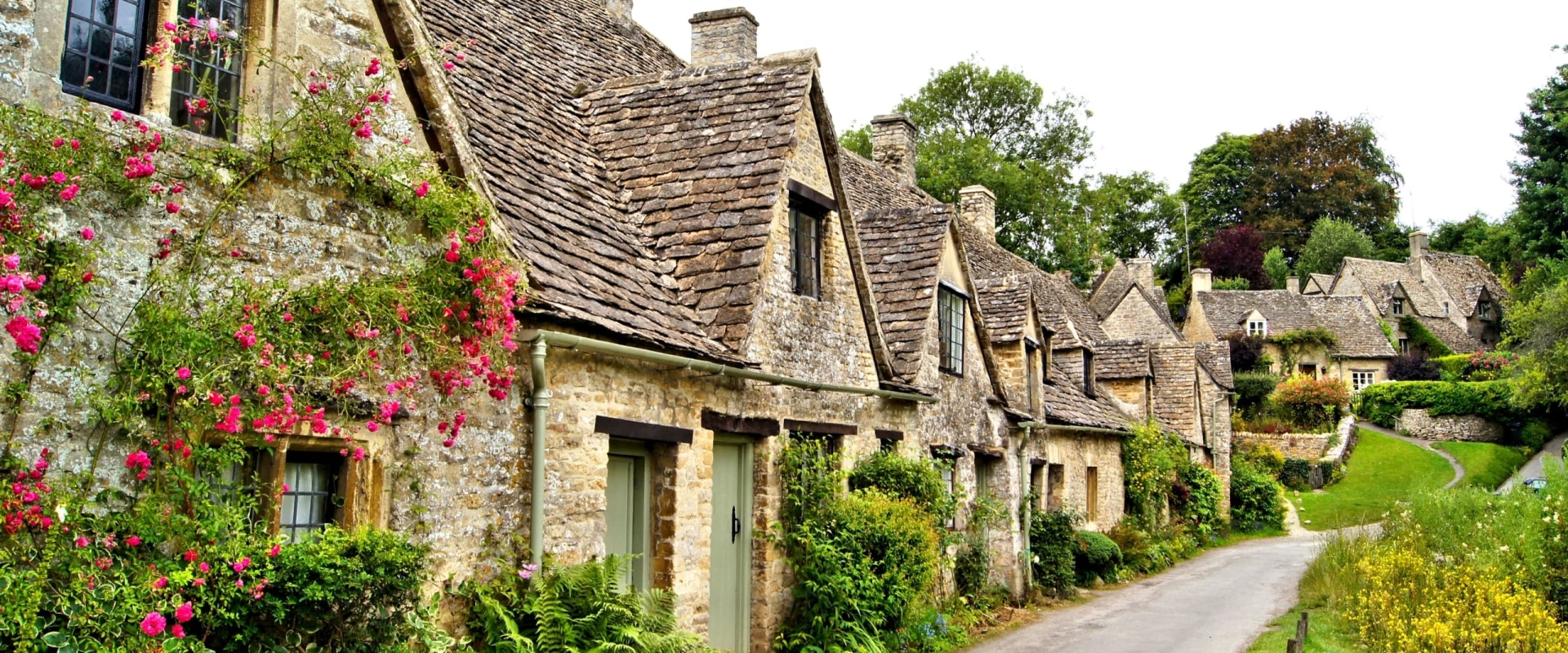Just west of Oxford, in England’s bucolic region of honey-colored stone cottages and gently rolling green fields, the ambitious and enlightened cyclist can sleuth out a northern riding loop affectionately known to locals as “A Road for Today,” winding past fairytale villages and forested hills. Perhaps another time, they’ll be called to coast along the area’s southern loop, appropriately called “A Road for Tomorrow.”
Culture
VBT Dispatch: Cycling England’s Storybook Cotswolds
Posted on Wednesday, February 16th, 2022
Story by: Ken Lovering | Travel Writer

Such are the leisurely and laid-back charms of the Cotswolds, the most English of English enclaves.
Cycling this sleepy region steeped in agrarian traditions, you would be forgiven if you thought you were taking a spin into centuries past. Nowhere else can you “find beauty that is more completely soothing to the soul,” wrote renowned British travel writer S.P.B. Mais in 1932’s The Highlands of Britain.
If you know VBT, you know that we listen to what locals have to say, so we take Mais’s high praise to heart. After all, the soul-soothing nature of the Cotswolds have endured. And today, its strict preservation standards and inviting country lanes make it the ideal place for a Self-Guided Bicycling Vacation.
A Brief Woolly History
The Cotswolds have been an official Area of Outstanding Natural Beauty since 1966. Thanks to that designation, its character as a medieval wool-trading center remains. Much of that wool was shorn off a breed of sheep with an aptly charming name, the large and lushly coated Cotswold Lion. From 1250 to 1350, their prized fleece was shipped off to the continent, largely to Italian merchants with deep pockets and high demand for soft fabrics back home.
Wool wealth financed the construction of the area’s elegant manors, beautiful churches, and tidy market towns. But with the Industrial Revolution, locals moved to big cities, the industry came to an abrupt halt, and time forgot the Cotswolds. All that changed with the revitalizing efforts of 20th-century tourism – and today the resplendent countryside and enchanting thatched-roof villages evoke the English country living of a rich medieval past.
A Cyclist’s Paradise
The beauty of the Cotswolds are its nooks and crannies. No matter where you find yourself pedaling, minor roads become narrow roads and narrow roads squeeze into narrower lanes. Alongside most any route, drystone walls sprinkled with moss stand as they have for generations, a remarkable thing considering that they were built without mortar.
There’s more to the English charm and tradition here than limestone cottages and drystone walls. From Chipping Campden to Moreton-in-Marsh, cozy bakery shoppes offer up cream tea in elegant cups and saucers and a sweet array of Victoria sponge cakes. Pubs proudly display prints that depict a long traditions of fox hunts while empty wine bottles corked by tall candles drip with dried wax. Local patrons trade stories from their latest game of skittles, an ancestor of bowling. Posted notices around any town announce fairs where you can find bric-a-brac.
The point is, there is nary a country lane that doesn’t lead to pastoral beauty parceled by those drystone walls, storybook villages steeped in charm, and even some quirky surprises that you could only stumble on in a once-forgotten mecca where wool was king.
A Pair of Irresistible Cotswolds Highlights
The quiet Cotswolds country life hides a moneyed class. It is sometimes regal, as at Highgrove House, the Cotswolds-adjacent residence of Prince Charles, and sometimes quirky, as at two of our favorite spots.
Atop Broadway Hill, the second highest point of the Cotswolds, stands the decidedly out-of-place Broadway Tower. You might think that it marks the former site of a castle. In actuality, it was a pet project of Barbara, Countess of Coventry. Her house in Worcester was some 22 miles from Broadway Hill; the latter had long been used as a spot to light beacons on special occasions. That got the Countess wondering: “I wonder if I could see a beacon lit on this hill from my house.” To find out, and more importantly, to give the beacon some height, she commissioned the construction of Broadway Tower.
The folly was completed in 1799. You can imagine her servants climbing the tower with a lantern and placing it in one of the small keeps. Surely, they were relieved when they returned to Worcester and learned that the Countess could in fact see the light flickering in the distance. For both its historic and architectural curiosity and its splendid views, the 65-foot tower – now situated in a country park and accessed by roadway or via a steep hike from Broadway village – is certainly worth a visit.
Elsewhere, in a triangular plaza in the village of Snowshill, make time to visit the Snowshill Manor and Garden. The house is part of the National Trust and was once home to Charles Paget Wade (1883-1956), a local with a passion for curiosities. His family motto was “Let Nothing Perish,” a sentiment he fully embraced to his dying day.
Today, the house is packed with finely crafted items that he found too precious to part with. You’ll find 22,000 objects populating most every square inch of every room. More than a mere collection, Snowshill exudes a rich atmosphere all its own, with a surprise in every room and a new fascination in every corner. Nothing is labelled, leaving the imagination room to soar.
Finely carved spinning wheels, Japanese samurai armor, hunting horns, and even 19th-century bicycles comprise the collection.
 VBT Bicycling Vacations
VBT Bicycling Vacations Country Walkers
Country Walkers